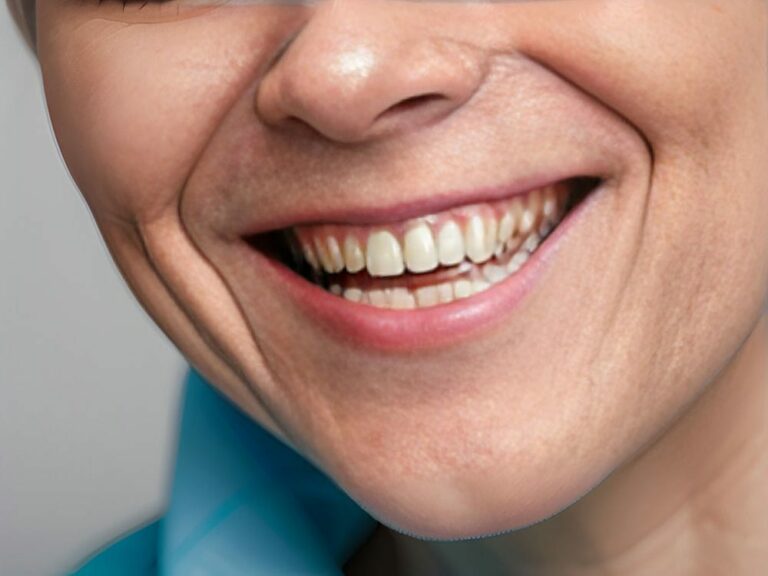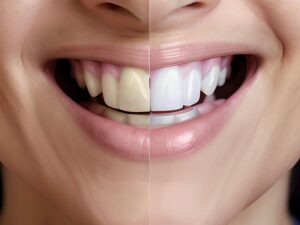Dental composites: A Breakthrough in Tooth-colored Fillings
Dental cavities have long been a common problem for people of all ages. These cavities, caused by tooth decay, often require filling to prevent further damage and restore the tooth’s function. In the past, amalgam fillings made of silver or mercury were commonly used. However, advancements in dental materials have led to the development of tooth-colored composite fillings, which offer numerous benefits.
One major breakthrough in dentistry is the use of dental composites for fillings. Dental composites are a mixture of resin and filler particles that can be color-matched to the natural teeth, making them virtually indistinguishable from the surrounding tooth structure. This provides an aesthetic advantage over traditional amalgam fillings, which are highly noticeable due to their silver color.
Furthermore, dental composites offer improved bonding properties compared to amalgam fillings. With composite dentistry, the dentist can bond the filling material directly to the tooth structure using adhesive techniques. This creates a strong bond between the filling and the tooth, resulting in enhanced durability and longevity. Additionally, composite fillings require less removal of healthy tooth structure during preparation compared to amalgam fillings.
Overall, dental composites have revolutionized the field of restorative dentistry by providing an effective solution for dental cavities that is both aesthetically pleasing and durable. With their ability to blend seamlessly with natural teeth and their superior bonding properties, composite fillings have become increasingly popular among patients and dentists alike. As technology continues to advance in this field, we can expect even more exciting developments in composite dentistry in the future.
The Evolution of Composite Resin: From Strength to Aesthetics
The dental composites market has experienced significant growth in recent years, driven by the increasing demand for dental amalgam alternatives. As patients become more conscious about the aesthetic appearance of their teeth, they are opting for tooth-colored composite fillings and veneers instead of traditional silver amalgam fillings. This shift towards composites has opened up new opportunities for dental practitioners and manufacturers in the field.
One of the key advancements in dental composites is the evolution of composite resin from its initial focus on strength to a greater emphasis on aesthetics. In the past, composite materials were primarily used for posterior restorations where strength and durability were paramount. However, with advancements in technology and material science, composite resins now offer excellent esthetic properties that rival natural teeth.
Composite veneers have become particularly popular among patients seeking smile makeovers or cosmetic improvements. These thin layers of composite resin are bonded to the front surface of teeth to enhance their appearance. The ability to customize the shade, shape, and translucency of composite veneers allows dentists to achieve seamless and natural-looking results.
As the demand for dental composites continues to grow, manufacturers are investing in research and development to further improve these materials. Advancements in nanotechnology have led to the development of nano-composite resins that offer even greater strength and wear resistance. Additionally, efforts are being made to reduce curing time and simplify the application process, making composite restorations more efficient for both dentists and patients.
With ongoing innovation and improvements in dental composites, we can expect these materials to play an increasingly important role in restorative and cosmetic dentistry. The combination of aesthetic appeal, durability, and versatility makes dental composites a preferred choice for both patients and practitioners alike.
Enhancing Dental Restorations with Advanced Composite Materials
Dental composite materials have come a long way in recent years, evolving from being primarily focused on strength to now offering excellent aesthetic properties. This advancement has opened up new possibilities for dental practitioners and manufacturers in the field. Patients are increasingly opting for tooth-colored composite fillings and veneers over traditional silver amalgam fillings, driven by their desire for a more aesthetically pleasing smile.
One area where dental composites have made significant strides is in composite restorations. These materials are now widely used not only for posterior restorations but also for anterior restorations, thanks to their improved aesthetics. With the ability to customize the shade, shape, and translucency of composite materials, dentists can achieve seamless and natural-looking results. This has made composite veneers particularly popular among patients seeking cosmetic improvements or smile makeovers.
In addition to their aesthetic appeal, dental composites also offer durability and versatility. The properties of these materials have been enhanced through advancements in nanotechnology, leading to the development of nano-composite resins with even greater strength and wear resistance. Furthermore, efforts are being made to simplify the application process and reduce curing time, making composite restorations more efficient for both dentists and patients.
As dental composites continue to improve and innovate, they will undoubtedly play an increasingly important role in restorative and cosmetic dentistry. The combination of aesthetic appeal, durability, and versatility makes them a preferred choice for both patients and practitioners alike. With ongoing research and development in this field, we can expect further advancements that will continue to enhance dental restorations using advanced composite materials.
The Science Behind Composite Bonding for Beautiful Smiles
Tooth-colored composites have revolutionized the field of dentistry, offering patients a more aesthetically pleasing alternative to traditional silver amalgam fillings. Dental composite technology has made significant advancements in recent years, resulting in materials that not only provide excellent strength and durability but also offer improved aesthetics. This has opened up new possibilities for dental practitioners and manufacturers alike.
One of the key advantages of tooth-colored composites is their ability to seamlessly blend in with natural teeth. With the ability to customize the shade, shape, and translucency of composite materials, dentists can achieve restorations that are virtually indistinguishable from the surrounding teeth. This makes them an ideal choice for both posterior and anterior restorations, as well as cosmetic improvements such as composite veneers.
In addition to their aesthetic appeal, composite dental materials also offer durability and versatility. Advancements in nanotechnology have led to the development of nano-composite resins that exhibit even greater strength and wear resistance. This means that dental restorations can now withstand the demands of daily use without compromising on appearance. Furthermore, ongoing research aims to simplify the application process and reduce curing time, making composite restorations more efficient for both dentists and patients.
As dental composite technology continues to evolve, it is clear that these materials will play an increasingly important role in restorative and cosmetic dentistry. The combination of aesthetic appeal, durability, and versatility makes tooth-colored composites a preferred choice for patients seeking natural-looking results. With ongoing advancements in this field, we can look forward to further improvements that will enhance dental restorations using advanced composite materials.
Combating Tooth Decay with Revolutionary Dental Composites
Composite tooth fillings have revolutionized the field of dentistry, offering patients a more aesthetically pleasing alternative to traditional silver amalgam fillings. These dental composite fillings are made from a combination of resin and filler materials, which can be customized to match the shade of the patient’s natural teeth. The ability to seamlessly blend in with natural teeth makes composite tooth fillings an ideal choice for restorations that are virtually indistinguishable from the surrounding teeth.
Not only do composite restoration materials offer excellent aesthetic results, but they also provide durability and versatility. Advances in nanotechnology have led to the development of nano-composite resins, which exhibit even greater strength and wear resistance. This means that dental restorations using these materials can withstand the demands of daily use without compromising on appearance. Additionally, ongoing research aims to simplify the application process and reduce curing time, making composite restorations more efficient for both dentists and patients.
The use of dental composite fillings is becoming increasingly important in restorative dentistry due to their combination of aesthetic appeal, durability, and versatility. Patients seeking natural-looking results can benefit from these tooth-colored composites, as they provide seamless blending with natural teeth. As advancements in dental composite technology continue to evolve, we can expect further improvements in composite restoration materials that enhance dental restorations using advanced composite materials without sacrificing aesthetics or durability.
The Benefits of Choosing Dental Fillings Made of Composite Materials
Composite dental bonding has emerged as a popular choice for restorative dentistry due to its numerous benefits. These composite materials offer a range of advantages over traditional silver amalgam fillings. First and foremost, they provide patients with a more aesthetically pleasing option, as the color of the composite can be matched to the shade of their natural teeth. This allows for a seamless blending that is virtually indistinguishable from the surrounding teeth.
In addition to their aesthetic appeal, composite dental restoratives also offer durability and versatility. Thanks to advancements in nanotechnology, nano-composite resins have been developed, which exhibit even greater strength and wear resistance. This means that dental restorations made with these materials can withstand the demands of daily use without compromising on appearance.
Furthermore, ongoing research is focused on simplifying the application process and reducing curing time for composite dental treatment. This not only makes it more efficient for dentists but also improves the overall experience for patients. With these advancements, composite dental restoratives are becoming increasingly important in restorative dentistry, providing patients with natural-looking results that blend seamlessly with their natural teeth.
As technology continues to evolve and new advancements are made in composite materials, we can expect further improvements in dental restorations using advanced composites. The combination of aesthetic appeal, durability, and versatility makes composite dental bonding an ideal choice for patients seeking natural-looking results. With ongoing research and development efforts in this field, composite dental treatment will continue to enhance oral health outcomes while maintaining superior aesthetics.
Achieving Natural-Looking Tooth Restoration with Composite Resin
Composite dental procedures have revolutionized the field of restorative dentistry, offering patients a more natural-looking and durable option for tooth restoration. One of the key advantages of composite materials is their ability to match the color of the patient’s natural teeth, resulting in seamless blending that is virtually indistinguishable. This aesthetic appeal is further enhanced by advancements in nanotechnology, which have led to the development of nano-composite resins that offer even greater strength and wear resistance.
In addition to their aesthetic benefits, composite dental fillings also provide durability and versatility. These materials are designed to withstand the demands of daily use without compromising on appearance. Furthermore, ongoing research is focused on simplifying the application process and reducing curing time for composite dental treatment. This not only makes it more efficient for dentists but also improves the overall experience for patients.
With these advancements in composite materials, dental restorations made with composites are becoming increasingly important in restorative dentistry. They offer patients natural-looking results that blend seamlessly with their natural teeth. The combination of aesthetic appeal, durability, and versatility makes composite dental bonding an ideal choice for those seeking tooth restoration options. As technology continues to evolve and new advancements are made in this field, we can expect further improvements in dental restorations using advanced composites.
It’s worth noting that while composite dental fillings may have a slightly higher cost compared to traditional silver amalgam fillings, many patients find them well worth the investment due to their superior aesthetics and long-lasting results. The benefits of choosing composite dental fillings extend beyond just appearance, as they offer durability and versatility that can improve oral health outcomes. As more research and development efforts are dedicated to advancing composite materials, we can anticipate even greater strides in achieving natural-looking tooth restoration at a reasonable cost.
Advancements in Dental Aesthetics through Composite Materials
Advancements in Dental Aesthetics through Composite Materials
The field of restorative dentistry has seen significant advancements in dental aesthetics through the use of composite materials. These materials have revolutionized tooth restoration by offering patients a more natural-looking and durable option. Thanks to the ability of composite materials to match the color of natural teeth, they seamlessly blend with the patient’s existing teeth, resulting in a virtually indistinguishable appearance. This aesthetic appeal is further improved by advancements in nanotechnology, which have led to the development of nano-composite resins that offer even greater strength and wear resistance.
In addition to their aesthetic benefits, composite dental fillings provide durability and versatility. These materials are designed to withstand the demands of daily use without compromising on appearance. Ongoing research is focused on simplifying the application process and reducing curing time for composite dental treatment, making it more efficient for dentists and improving the overall experience for patients.
With these advancements in composite materials, dental restorations made with composites are becoming increasingly important in restorative dentistry. They offer patients natural-looking results that blend seamlessly with their natural teeth. The combination of aesthetic appeal, durability, and versatility makes composite dental bonding an ideal choice for those seeking tooth restoration options. As technology continues to evolve and new advancements are made in this field, we can expect further improvements in dental restorations using advanced composites.
It’s worth noting that while composite dental fillings may have a slightly higher cost compared to traditional silver amalgam fillings, many patients find them well worth the investment due to their superior aesthetics and long-lasting results. The benefits of choosing composite dental fillings extend beyond just appearance, as they offer durability and versatility that can improve oral health outcomes. As more research and development efforts are dedicated to advancing composite materials, we can anticipate even greater strides in achieving natural-looking tooth restoration at a reasonable cost.
Exploring the Versatility of Dental Composites in Restorative Dentistry
The versatility of dental composites in restorative dentistry is truly remarkable. These materials can be used for a wide range of dental procedures, including fillings, bonding, veneers, and even full-mouth restorations. This versatility allows dentists to address various dental issues with composite materials, providing patients with customized and long-lasting solutions.
One of the key advantages of dental composites is their ability to be molded and shaped to match the natural contours of the teeth. This makes them an ideal choice for filling cavities or repairing chipped or cracked teeth. With the use of advanced techniques such as layering and shading, dentists can achieve seamless results that are virtually indistinguishable from natural teeth.
Dental composites also offer the advantage of being able to bond directly to the tooth structure. This eliminates the need for extensive tooth preparation and allows for more conservative treatment options. Additionally, composites can be color-matched to the patient’s existing teeth, ensuring a harmonious and natural-looking smile.
As technology continues to advance, we can expect even greater versatility in dental composites. Researchers are constantly exploring new materials and techniques that improve strength, durability, and aesthetics. With these advancements, dentists will have even more options for providing their patients with high-quality restorations that meet their specific needs.
In summary, dental composites have revolutionized restorative dentistry by offering a versatile solution that combines aesthetics with durability. Their ability to seamlessly blend with natural teeth makes them an ideal choice for tooth restoration procedures. As technology continues to evolve, we can anticipate further advancements in dental composites that will provide even better outcomes for patients.
Future Trends and Innovations in Dental Composite Materials
As technology continues to advance, researchers and manufacturers are constantly exploring new materials and techniques to further improve dental composites. One of the future trends in dental composite materials is the development of nanocomposites. These composites incorporate nanoparticles into the resin matrix, enhancing their mechanical properties and making them even stronger and more durable. Nanocomposites have the potential to revolutionize restorative dentistry by providing materials that can withstand the daily stresses of chewing and last longer than traditional composites.
Another area of innovation in dental composites is the improvement of aesthetics. Researchers are working on developing composites with enhanced color matching capabilities, allowing for even more natural-looking restorations. Additionally, advancements in shading techniques will give dentists greater control over achieving lifelike results. With these advancements, patients can expect restorations that seamlessly blend with their natural teeth, resulting in a smile that looks and feels completely natural.
In addition to strength and aesthetics, future developments in dental composite materials will also focus on simplifying the placement process for dentists. One such innovation is the introduction of bulk-fill composites, which allow for faster and easier filling procedures. These composites have improved light-curing properties, enabling dentists to place larger increments of material at once without compromising its strength or esthetics.
As technology continues to evolve and research progresses, we can anticipate even more exciting innovations in dental composite materials. These advancements will not only enhance the durability and aesthetics of restorations but also make procedures faster and more efficient for both patients and dentists. With these future trends, dental composites will continue to be at the forefront of restorative dentistry, providing patients with long-lasting, natural-looking smiles.
Overall, the future looks bright for dental composite materials as researchers continue to push boundaries and explore new possibilities. With ongoing advancements in nanotechnology, color matching capabilities, shading techniques, and simplified placement processes, we can expect dental composites to become even more versatile and effective in meeting the diverse needs of patients. By embracing these innovations, dentists will be able to provide their patients with high-quality restorations that not only restore function but also enhance the beauty of their smiles.
FAQs
Q: What are dental composite materials?,
A: Dental composite materials are a type of synthetic resin that is used to fill cavities and restore teeth.,
Q: What are the advantages of using dental composite materials?,
A: Dental composite materials offer several advantages, including excellent aesthetic results, the ability to bond directly to the tooth structure, and the preservation of more natural tooth structure compared to traditional amalgam fillings.,
Q: How do dental composite materials bond to the tooth structure?,
A: Dental composite materials bond to the tooth structure through a process called adhesive bonding. This involves the application of a bonding agent that creates a strong bond between the composite material and the tooth.,
Q: Can dental composite materials be used for more than just fillings?,
A: Yes, dental composite materials can also be used for other dental procedures, such as veneers, dental bonding, and even full mouth restorations.,
Q: Are dental composite materials safe to use?,
A: Yes, dental composite materials are considered safe for use in dental procedures. They have been extensively tested and meet strict safety standards.,
Q: How long do dental composite fillings last?,
A: The lifespan of dental composite fillings can vary depending on factors such as the size and location of the filling, as well as the patient’s oral hygiene habits. On average, they can last between 5 to 10 years.,
Q: Can dental composite materials stain over time?,
A: Dental composite materials can become stained over time, especially if the patient consumes staining substances like coffee, tea, or tobacco. However, they can be polished or replaced to restore their original appearance.,
Q: Are dental composite materials more expensive than other dental materials?,
A: Dental composite materials tend to be more expensive than traditional amalgam fillings. However, many patients are willing to pay the extra cost for the aesthetic benefits and preservation of natural tooth structure.,
Q: Can dental composite materials be used for patients with metal allergies?,
A: Yes, dental composite materials are an excellent alternative for patients with metal allergies or sensitivities, as they do not contain any metal components.,
Q: Are dental composite materials suitable for all types of cavities?,
A: Dental composite materials are suitable for most types of cavities. However, in cases where the cavity is large or the tooth requires significant structural support, other materials like dental crowns may be more appropriate.


















